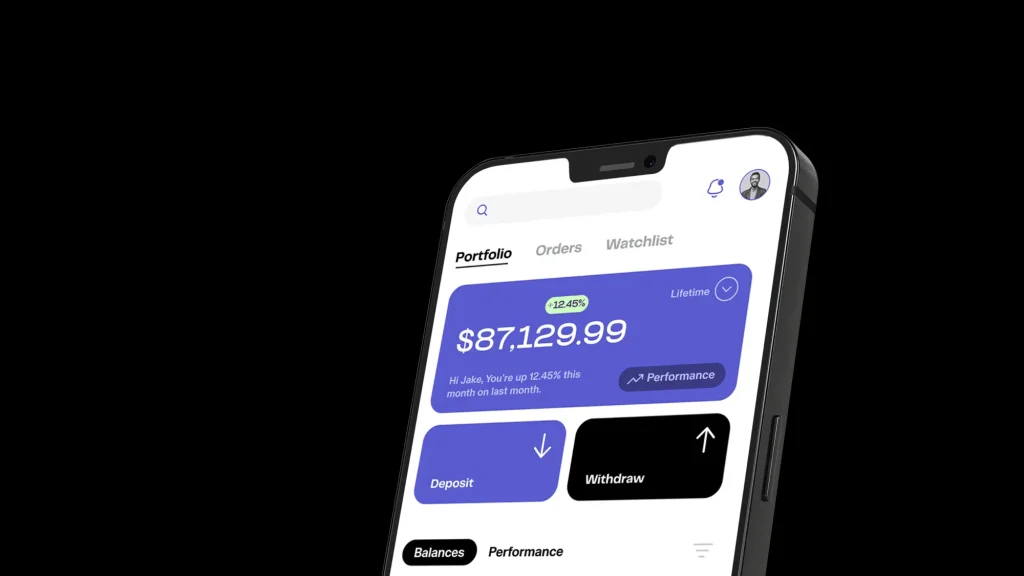The $347 Netflix Subscription That Made Me Rethink Everything
Last Tuesday, I was casually scrolling through my credit card statement when something made me do a double-take. Netflix: $347.88.
That couldn’t be right. Netflix costs like $15 a month, right?
Wrong. Turns out I’d been paying for Netflix Premium, Hulu Live, Disney+, HBO Max, Apple TV+, Paramount+, and three other streaming services I’d completely forgotten about. For almost two years. The worst part? I’d been complaining to friends about being “broke” while hemorrhaging money on shows I never watched.
That embarrassing wake-up call sent me down a rabbit hole of personal finance apps, and what I discovered completely changed how I think about money. If you’re tired of wondering where your paycheck disappears to every month, let me share what actually worked.
The Great Subscription Massacre (Thanks, Rocket Money)
My first stop was Rocket Money, formerly known as Truebill. I’ll be honest – I was skeptical about letting an app dig through my financial data. But the alternative was spending hours manually hunting down every recurring charge across four different credit cards.
The results were shocking. In addition to my streaming service addiction, Rocket Money found:
- A gym membership I’d forgotten to cancel after moving cities ($89/month)
- Three different cloud storage services (apparently I really hate deleting photos)
- A meditation app I used exactly twice ($12.99/month)
- Some cryptocurrency tracking service from 2022 that I definitely didn’t need
The cancellation feature was a game-changer. Instead of navigating customer service hell for each subscription, Rocket Money handled most of the cancellations automatically. For the stubborn ones, they literally negotiated on my behalf. They got my internet bill reduced by $30/month just by calling and asking.
Bottom line: In my first month using Rocket Money, I saved $284. The app pays for itself several times over.
YNAB: The Budget That Actually Stuck
I’d tried budgeting apps before. Downloaded them, set them up, used them for a week, then forgot about them completely. You Need A Budget (YNAB) was different because it forced me to confront a fundamental question: What is my money supposed to do?
The “give every dollar a job” philosophy sounds like corporate speak, but it’s surprisingly effective. Instead of tracking spending after the fact, YNAB makes you decide where money goes before you spend it.
My breakthrough moment: I realized I was treating my checking account like a magic money fountain. Money appeared (payday), money disappeared (life), and I hoped there’d be enough left over for savings. YNAB made me intentional about every expense.
The learning curve is real. YNAB has more rules and concepts than other budgeting apps. But once the system clicked, I started making financial decisions based on actual data instead of vague anxiety about money.
Real results: After six months with YNAB, I’d built my first real emergency fund and stopped the paycheck-to-paycheck cycle that had defined my twenties.
Qapital: Tricking Myself Into Saving
Qapital appealed to my psychology major brain because it gamifies saving money. The app rounds up purchases to the nearest dollar and saves the difference. Buy a $4.50 coffee, and 50 cents goes to savings.
What made it fun: I created specific savings rules that matched my habits. Every time I bought coffee (my weakness), the app would save an extra $2. When I ordered takeout instead of cooking, it saved $5. These rules turned my bad spending habits into inadvertent saving opportunities.
The surprise factor kept me engaged. I’d check the app weekly and discover I’d saved $23 without thinking about it. It felt like finding money in old jacket pockets.
The downside: The amounts are small, so it won’t replace serious budgeting. But as a painless way to build savings habits, it’s brilliant.
Six-month results: I saved $847 just from automated round-ups and penalty rules. That became the foundation of my vacation fund.
Acorns: Investing for People Who Hate Investing
I’d always been intimidated by investing. The stock market felt like a casino where everyone else knew the rules and I’d inevitably lose my rent money. Acorns made investing as simple as buying coffee.
The micro-investing approach meant I started with literal spare change. Every purchase got rounded up, and that money went into diversified investment portfolios. No need to research individual stocks or understand market timing.
What surprised me: The educational content actually taught me about investing without being overwhelming. Short articles explained concepts like compound interest and diversification in ways that made sense to someone who’d avoided finance their entire adult life.
The psychological shift was huge. Instead of seeing investing as something for rich people or finance bros, I started thinking of myself as an investor. That identity change led to better financial decisions across the board.
One year later: My “spare change” had grown to $1,200, and I’d learned enough to start making larger, more intentional investments.
Mint: The Reliable Workhorse
Mint might not be the flashiest app, but it’s the Swiss Army knife of personal finance. After trying multiple budgeting systems, I kept coming back to Mint for its comprehensive overview of my entire financial life.
The automatic categorization saved hours of manual entry. Mint learned that Starbucks charges were coffee expenses, Target runs were usually groceries plus random household items, and Uber rides were transportation.
Credit score monitoring helped me understand how my spending habits affected my creditworthiness. Watching that number improve became surprisingly motivating.
Bill tracking prevented late fees that had been costing me $25-50 every few months. The app’s reminders were more reliable than my memory.
Why it’s still relevant in 2025: While other apps focus on specific aspects of money management, Mint gives you the complete picture. It’s the app I check weekly to make sure everything else is working.
The AI Revolution: Cleo’s Brutal Honesty
Cleo is unlike any financial app I’d used before. It’s built around an AI chatbot that tracks your spending and offers commentary that ranges from helpful to hilariously savage.
Sample Cleo roast: “You spent $47 on DoorDash last week. That’s more than some people spend on groceries. Are we ordering food or buying the restaurant?”
The humor made financial reality easier to swallow. Instead of feeling ashamed about poor spending choices, Cleo’s sarcastic observations made me laugh while still delivering the message that I needed to change.
The savings challenges kept things interesting. Cleo would propose goals like “Save $100 this month by cooking dinner at home 15 times” and track my progress with encouraging (and sometimes mocking) updates.
Why it worked for me: Traditional budgeting apps felt like homework. Cleo felt like having a financially savvy friend who wasn’t afraid to call out my bad decisions.
Couples Money: Zeta’s Relationship Revolution
When my partner and I moved in together, Zeta saved our relationship from money-related arguments. Before Zeta, conversations about finances were awkward, confusing, and often ended in frustration.
Shared financial visibility meant no more surprises about spending or confusion about who paid for what. We could see our individual expenses and shared goals in one place.
The bill-splitting features eliminated the mental math and awkward conversations about who owed what. Rent, utilities, groceries, and date nights were automatically tracked and divided according to our agreed-upon percentages.
Joint savings goals made big purchases feel collaborative instead of competitive. Instead of arguing about whether we could afford a vacation, we could see exactly how much we’d saved toward our travel fund and when we’d reach our goal.
Most importantly: Zeta facilitated better money conversations. Instead of vague discussions about “spending less,” we could look at specific data and make concrete plans.
The Dark Horse: Monarch Money’s Elegant Simplicity
Monarch Money wasn’t on my radar until a financially savvy friend recommended it. After months of juggling multiple money apps, Monarch’s clean, comprehensive approach was refreshing.
The AI forecasting showed me potential financial futures based on current spending patterns. Seeing a projection that I’d have $15,000 saved by next December was more motivating than any budgeting lecture.
The collaboration features let my partner and I work together on financial planning without sharing login credentials or constantly updating each other on transactions.
What set it apart: While other apps focus on specific problems (subscriptions, budgeting, investing), Monarch provides a complete financial operating system that actually improved my overall money management.
The Apps I Tried (And Why They Didn’t Stick)
Goodbudget had great envelope budgeting concepts, but the manual entry was too time-consuming for my lifestyle.
Revolut was impressive for travel and international transactions, but the budgeting features felt like an afterthought compared to dedicated personal finance apps.
Honeydue (for couples) had good intentions but lacked the comprehensive features that made Zeta more useful for shared financial management.
What I Learned About Money Apps (And Myself)
No single app solves everything. I ended up using Rocket Money for subscription management, YNAB for budgeting, and Acorns for investing. The key was finding apps that worked well together rather than trying to force one app to do everything.
Automation beats willpower. The apps that worked best were the ones that required the least ongoing effort. Round-up savings, automatic bill tracking, and subscription monitoring all happened in the background while I lived my life.
Gamification actually works (for me, at least). Apps that made saving money feel like a game or challenge kept me engaged longer than purely utilitarian tools.
Transparency improved my relationship. Sharing financial data with my partner through Zeta reduced money-related stress and improved our communication about shared goals.
Small changes compound quickly. Canceling forgotten subscriptions, automating savings, and making spending visible led to significant improvements without dramatic lifestyle changes.
The Bottom Line: Your Money, Your Rules
After a year of testing these apps, my financial situation improved dramatically. Not because I started earning more money, but because I became intentional about where my money went.
The best money-saving app is the one you’ll actually use consistently. Some people thrive with YNAB’s detailed budgeting system. Others prefer Qapital’s set-it-and-forget-it approach. The key is matching the app’s philosophy to your personality and lifestyle.
Start with the obvious problems. If you’re losing money to forgotten subscriptions, try Rocket Money first. If you can never stick to budgets, Qapital’s automated approach might work better than traditional budgeting apps.
Don’t try to optimize everything at once. I started with subscription cleanup, then added automated saving, then graduated to proper budgeting. Trying to revolutionize your entire financial life overnight is a recipe for giving up.
The most surprising thing I learned? Managing money well isn’t about deprivation or perfect self-control. It’s about building systems that work with your habits instead of against them.
What money management challenges are you struggling with? I’m always curious about which approaches work for different people, especially since personal finance is, well, pretty personal.



